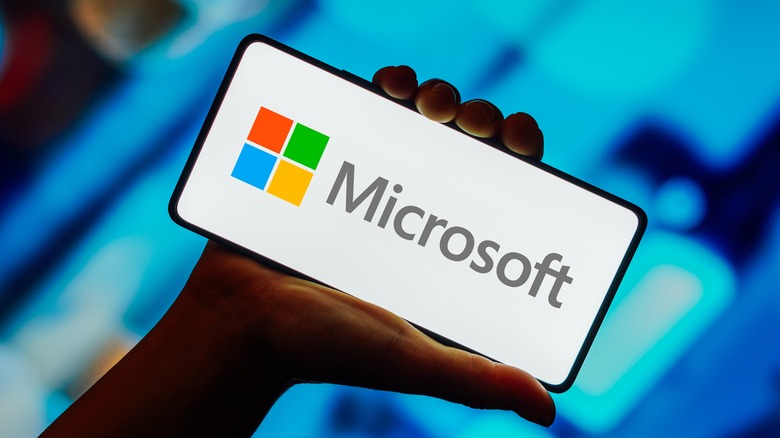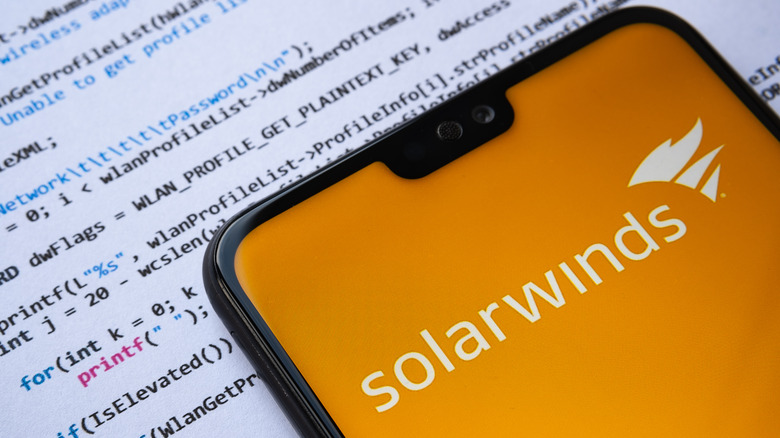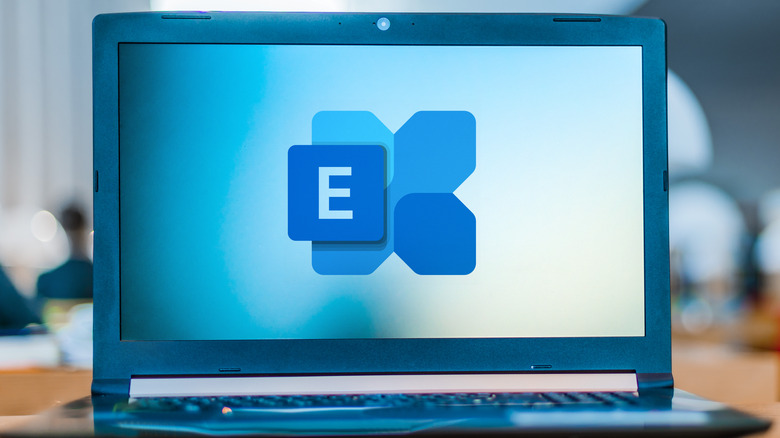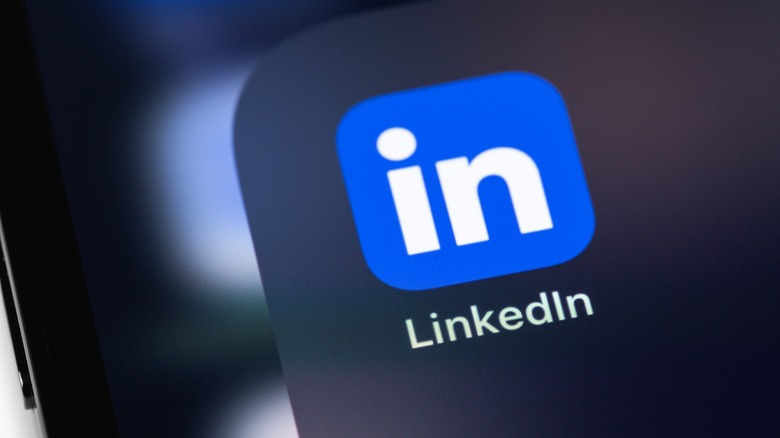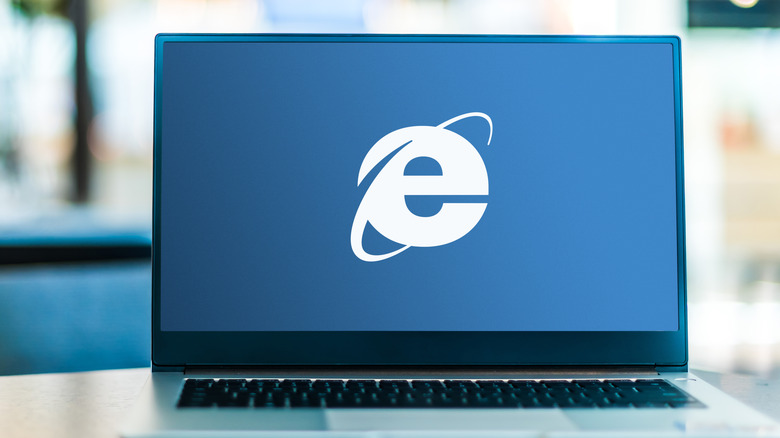5 Of The Biggest Security Breaches To Ever Hit Microsoft
Microsoft is currently one of the world's biggest tech giants, and not solely because it is the vendor behind the most popular computing system out there. It is also a leading player in the burgeoning artificial intelligence game, cloud services, enterprise software, gaming, developer services, and more. The company's ubiquitous presence on computing also makes its products a lucrative target for hackers aiming for machines belonging to high-profile targets, stealing state secrets, intellectual property theft, launching nation-state attacks, or just good ol' ransomware. Late in 2023, hackers linked to China plundered over 60,000 emails from across 10 state departments.
Naturally, Microsoft's history with cyberattacks has been quite busy in the past couple of decades. The company is always engaged in a race to find the security gaps and plug them before bad actors can exploit them. But the sheer scale of Microsoft's involvement in day-to-day computing at all scales also means the attack vectors are disturbingly diverse, and so is the scale of damage. Following is a list of the most notable breaches that Microsoft has suffered, in no particular chronological order or severity.
SolarWinds shock
"A moment of reckoning." This is how Brad Smith, Vice Chair & President at Microsoft, described the infamous 2020 hack, later labeling it as "the largest and most sophisticated attack the world has ever seen." In the aftermath of the incident, the U.S. government said in a statement that the Russian Foreign Intelligence Service hacked SolarWinds network management software. The product at the center of the attack was Orion, a monitoring and management software that was also used by multiple federal agencies and thousands of companies, including Microsoft. Notably, a ProPublica investigation found that a whistleblower warned Microsoft about a system flaw, which was also highlighted by independent researchers, but the concerns were not addressed.
The "espionage-based assault" started when attackers deployed a malware-laced update of the Orion software, which allowed hackers to breach the network and gain high-level privileges, including gaining access to administrator accounts and sign-in certificates. The ultimate goal was long-term system access and exfiltration of data. Going by the list of victims, it was a national security disaster. Nine federal agencies were affected by the attack, which includes the likes of the Department of Homeland Security, and the Treasury and Commerce Departments, among others. Worryingly, networks of the National Nuclear Security Administration (NNSA) and the U.S. Department of Energy (DOE) were also breached by hackers. The company's policies also come under hot scanner. In a separate assessment, the government's Cyber Safety Review Board (CSRB) blasted the company, concluding (PDF) that "Microsoft's security culture was inadequate."
Microsoft Exchange Server breach
Early in 2021, at least four critical zero-day vulnerabilities were exploited in Microsoft Exchange Server, which were subsequently used to steal email information from thousands of companies. The attack allowed hackers to steal email data without having to authenticate, and scarily, hackers accomplished it at multiple target organizations by remotely executing malicious code, as per an analysis by cybersecurity firm Volexity. However, it's not clear just how much damage the hackers dealt when they exploited flaws in Microsoft's email and calendar service for enterprise clients.
"Vulnerabilities the attackers exploited have been in the Microsoft Exchange Server code base for more than ten years," according to security expert Brian Krebs. Microsoft mentioned in an update that bad actors were exploiting the vulnerability to seed ransomware and other malware, which could significantly disrupt business continuity. The attack targeted schools, government offices, and private companies, and according to a Wall Street Journal report, the number of affected parties could well be over 250,000. Microsoft blamed the attack on HAFNIUM, a state-backed Chinese hacking group that primarily does its work in the U.S. by leasing virtual private servers (VPS).
Notably, the company had only been tracking the group for a year when the attack was reported. According to Microsoft security executive Tom Burt, the hackers obtained the administrator emails for breaking into Exchange Servers from an older incident that was also traced back to China. Experts told NPR that the stolen information could actually be a core element of China's AI ambitions.
The big LinkedIn scrape
Just over a year ago, it was reported that data pulled from LinkedIn, the Microsoft-owned social platform for professionals, was up for sale on a hacker forum. The trove of data contained information pulled from over half a billion profiles and had information such as names, phone numbers, workplace details, profile URLs, work titles, gender, and email addresses. This was one of the biggest batches of data that was found floating around for auction in shady corners of the internet. In the wake of the incident, Italy's privacy watchdog also launched an investigation.
LinkedIn, on the other hand, contended the "breach" label, "It was not a LinkedIn data breach," the company shared in an update, adding that "it is actually an aggregation of data from a number of websites and companies." Notably, data from private member accounts was not a part of the scraped batch, but the company admitted that it encompassed "publicly viewable member profile data." Now, scraping is not exactly a fresh technique.
However, what matters more in such cases is just how that data is exploited by bad actors. Identifiable information, the kind that was pulled from LinkedIn, can be used to launch spam and phishing attacks, as well, as targeted hacking campaigns against high-level targets. The person behind the LinkedIn incident was selling the data to "multiple" parties for a sum of $5,000, according to BBC, and did it all as a "hobby" as they had a day job, which, in retrospect, highlights just how easy it is to get hold of such personal information.
A year of source code leaks
In 2020, it was reported that the source of Windows XP was leaked, alongside a bunch of older operating systems including Windows Server 2003, Windows 2000, Windows NT, and multiple Embedded CE builds. The most surprising element of the leak, however, was the fact that it leaked on 4Chan, an anonymous message board social forum notorious for meme culture and unhinged conversations. The same year, source code for Windows NT 3.5 and the original Xbox was also leaked. Experts told ZDNet that the leaked material likely originated from academia, but the person behind the leak claimed that such data packages routinely change hands privately via brokers.
The outlet confirmed the legitimacy of the leaked material with software engineers. The code was authentic and was independently compiled into a functional operating system, however, it was short of a few components. As far as the Xbox leak goes, Microsoft confirmed to The Verge that the data, which included kernel cache of the software that ran on the original Xbox console, was genuine. However, the company didn't offer any further details on how exactly it was leaked.
Now, a source code leak is no small incident. However, by the time the aforementioned data made it online, the operating systems had receded into the unsupported territory for years, or even more than a decade. There are barely any computing systems out there, especially in high-risk environments, that run those legacy operating systems, which further disincentivizes any malicious attempts on a negligibly small target base.
Internet Explorer loophole
Early in 2010, Google reported what it referred to as a highly sophisticated and targeted attack that allowed hackers to steal intellectual property, but the main objective seems to have been stealing information on human rights activists in China. The other targets included companies across sectors such as media, finance, and software. Adobe was the other higher-profile victim of the attacks that targeted the internal networks of roughly 33 companies.
Cybersecurity firm McAfee later linked the operation to a vulnerability in Microsoft's Internet Explorer web browser. The attacks were targeted and entailed malware installation that was seeded through links and files. "Once the malware is downloaded and installed, it opens a back door that allows the attacker to perform reconnaissance and gain complete control over the compromised system," McAfee said in its analysis.
The attacks focused on machines with Internet Explorer Version 6, but back then, the browser was said to be vulnerable even on the most recent versions of the Windows operating system. Microsoft was aware of the flaw, but sat on it for months, after it was reported by a white-hat hacker. Only after the reports of the attacks went public that Microsoft issued an emergency patch for the zero-day flaw in the Microsoft Security Response Center's (MSRC) queue. "An attacker who successfully exploited this vulnerability could gain the same user rights as the logged-on user," Microsoft said, adding that the access privilege could allow hackers to steal, manipulate, or tamper data on target computers.
